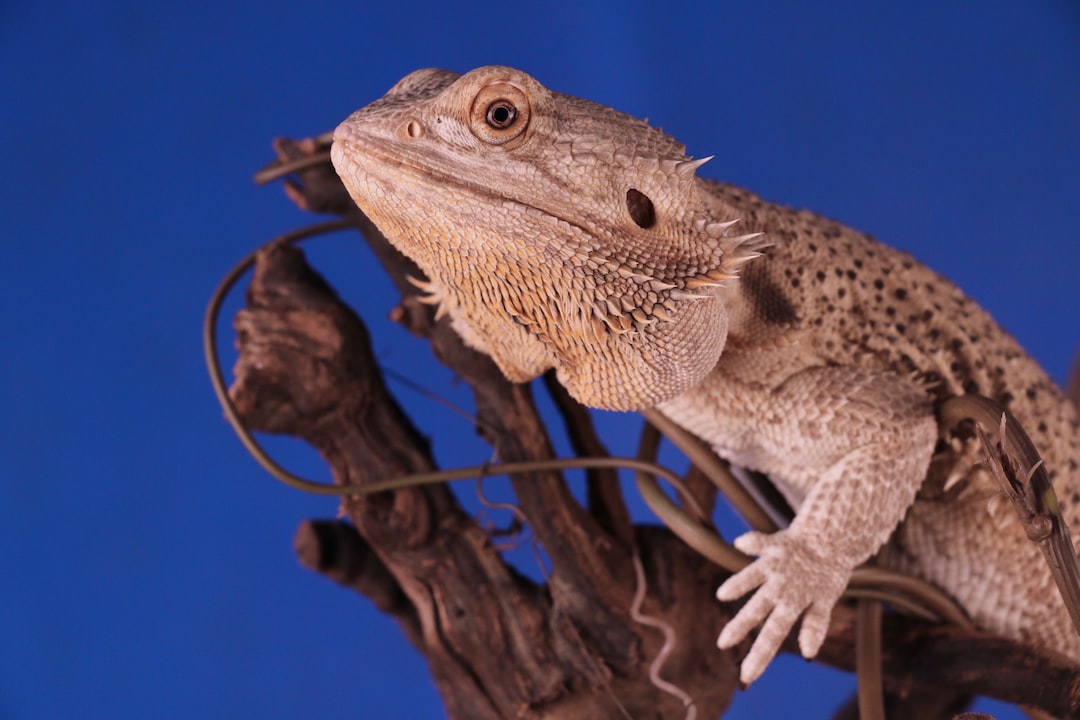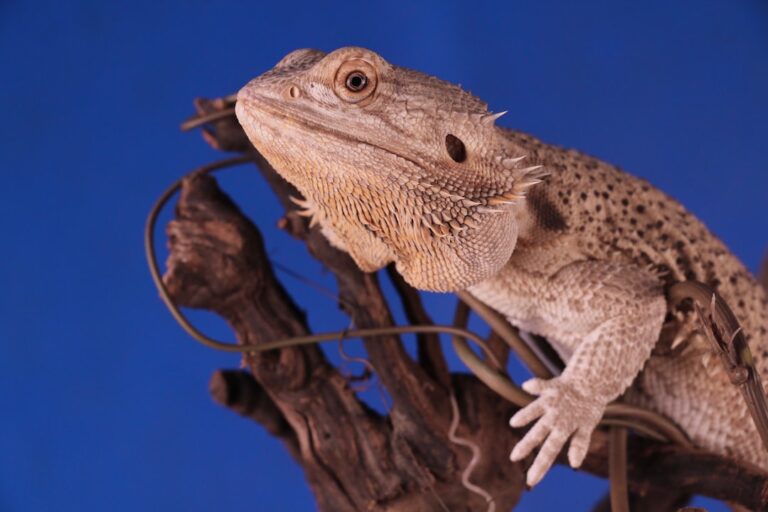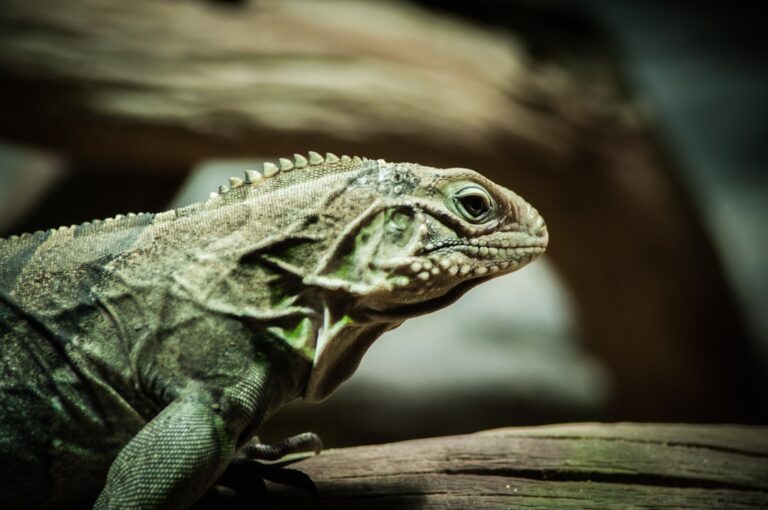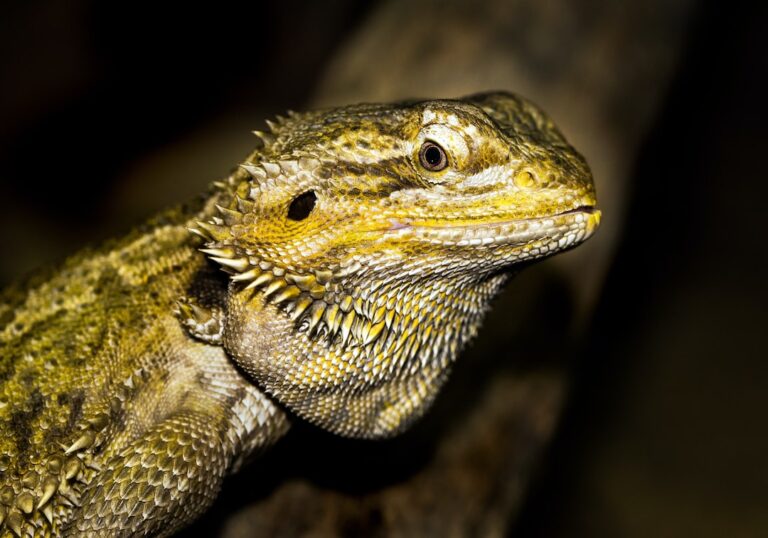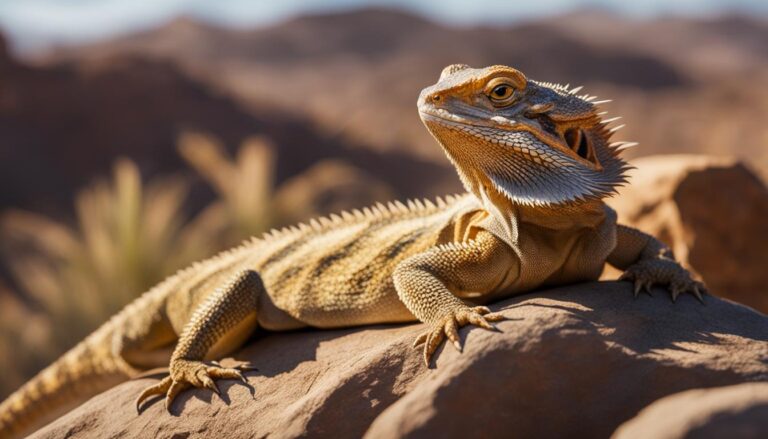Why Do Bearded Dragons Bury Themselves?
Bearded dragons, also known as Pogona, are popular reptile pets known for their unique appearance and docile nature. They are native to Australia and are commonly kept as pets due to their manageable size and relatively low maintenance requirements. However, it is important for owners to understand their behavior in order to provide them with a suitable environment and ensure their well-being.
Understanding the behavior of bearded dragons is crucial for their overall health and happiness. By understanding their natural instincts and behaviors, owners can create an environment that mimics their natural habitat, allowing them to thrive in captivity. This includes understanding their burrowing behavior, which is an important aspect of their natural behavior.
Table of Contents
Understanding the Burrowing Behavior of Bearded Dragons
Burrowing behavior refers to the act of digging or creating tunnels in the ground. In the wild, bearded dragons are known to burrow in order to regulate their body temperature, hide from predators, and engage in mating and nesting behaviors. In captivity, they may exhibit similar burrowing behaviors if provided with a suitable habitat.
In the wild, bearded dragons use their strong claws to dig burrows in sandy or loose soil. These burrows provide them with a safe and secure place to rest, regulate their body temperature, and hide from predators. They may also use these burrows for mating and nesting purposes.
In captivity, bearded dragons may exhibit burrowing behavior if provided with a suitable substrate such as sand or soil. This allows them to engage in their natural instinct to dig and burrow. However, it is important for owners to provide a safe and appropriate environment for this behavior.
Reasons Why Bearded Dragons Bury Themselves
There are several reasons why bearded dragons bury themselves, both in the wild and in captivity. These reasons include temperature regulation, hiding and protection from predators, and mating and nesting behavior.
Temperature regulation is one of the primary reasons why bearded dragons bury themselves. By burrowing into the ground, they can escape extreme temperatures and maintain a comfortable body temperature. This behavior allows them to cool down in hot weather or warm up in cooler temperatures.
Hiding and protection from predators is another reason why bearded dragons bury themselves. By burrowing into the ground, they can hide from potential threats and predators. This behavior helps them stay safe and avoid being detected by predators.
Mating and nesting behavior is also associated with burrowing in bearded dragons. Female bearded dragons may dig burrows to lay their eggs, providing a safe and secure environment for their offspring. Male bearded dragons may also engage in burrowing behavior during the mating season to establish territories and attract females.
Temperature Regulation and Burrowing
Burrowing plays a crucial role in temperature regulation for bearded dragons. In the wild, they use their burrows to escape extreme temperatures and maintain a comfortable body temperature. By burrowing into the ground, they can find cooler or warmer areas depending on their needs.
In captivity, it is important for owners to provide a suitable temperature gradient in the bearded dragon’s habitat. This means providing a basking spot with a heat source, such as a heat lamp or ceramic heat emitter, as well as cooler areas for the dragon to retreat to. By providing a range of temperatures, bearded dragons can regulate their body temperature by moving between different areas of their habitat.
Burrowing behavior can also indicate that the temperature in the habitat is not suitable for the bearded dragon. If they are constantly burrowing or seeking out cooler areas, it may be a sign that the temperature is too high and they are trying to cool down. Conversely, if they are not burrowing at all and are constantly seeking out warmer areas, it may indicate that the temperature is too low.
Hiding and Protection from Predators
Burrowing behavior in bearded dragons is also associated with hiding and protection from predators. In the wild, they use their burrows to hide from potential threats and predators. By burrowing into the ground, they can stay out of sight and avoid being detected.
In captivity, it is important for owners to provide hiding spots in the bearded dragon’s habitat. This can include rocks, logs, or other structures that provide a safe and secure place for the dragon to hide. By providing these hiding spots, owners can help mimic the natural environment of the bearded dragon and allow them to exhibit their natural burrowing behavior.
Mating and Nesting Behavior of Bearded Dragons
Burrowing behavior is also related to mating and nesting behavior in bearded dragons. Female bearded dragons may dig burrows to lay their eggs, providing a safe and secure environment for their offspring. This behavior is known as nesting.
Male bearded dragons may also engage in burrowing behavior during the mating season. They may dig burrows to establish territories and attract females. This behavior is often accompanied by head bobbing, arm waving, and other displays of dominance.
In captivity, it is important for owners to provide a suitable nesting area for female bearded dragons. This can include a separate enclosure with a suitable substrate for digging and laying eggs. By providing a suitable nesting area, owners can encourage natural nesting behavior in female bearded dragons.
Stress and Anxiety in Bearded Dragons
Stress and anxiety can have a significant impact on the health and well-being of bearded dragons. These reptiles are sensitive creatures and can easily become stressed or anxious if their needs are not met or if they are exposed to stressful environments.
Burrowing behavior can sometimes be a sign of stress or anxiety in bearded dragons. If they are constantly burrowing or seeking out hiding spots, it may indicate that they are feeling threatened or overwhelmed. Other signs of stress or anxiety in bearded dragons can include loss of appetite, aggression, lethargy, and changes in behavior.
It is important for owners to monitor their bearded dragon’s behavior and provide a suitable environment to minimize stress and anxiety. This includes providing a spacious and stimulating habitat, as well as regular handling and socialization.
Importance of Providing a Suitable Habitat for Bearded Dragons
Providing a suitable habitat is crucial for the health and well-being of bearded dragons. A suitable habitat should mimic their natural environment as closely as possible, allowing them to exhibit their natural behaviors and instincts.
For burrowing behavior, it is important to provide a suitable substrate such as sand or soil. This allows bearded dragons to dig and burrow, which is an important aspect of their natural behavior. The substrate should be deep enough to allow them to fully bury themselves if desired.
In addition to the substrate, it is important to provide a range of temperatures in the habitat. This includes a basking spot with a heat source, as well as cooler areas for the dragon to retreat to. By providing a suitable temperature gradient, owners can ensure that their bearded dragon can regulate their body temperature effectively.
Signs of Illness or Distress in Bearded Dragons
It is important for owners to be able to recognize signs of illness or distress in their bearded dragons. This includes monitoring their behavior and looking out for any changes that may indicate a problem.
Burrowing behavior can sometimes be a sign of illness or distress in bearded dragons. If they are constantly burrowing or seeking out hiding spots, it may indicate that they are not feeling well or are experiencing some form of discomfort. Other signs of illness or distress can include loss of appetite, weight loss, changes in bowel movements, lethargy, and changes in behavior.
If owners notice any signs of illness or distress in their bearded dragon, it is important to seek veterinary care as soon as possible. A veterinarian who specializes in reptiles will be able to provide a proper diagnosis and recommend appropriate treatment.
Tips for Encouraging Natural Burrowing Behavior in Bearded Dragons
If owners want to encourage natural burrowing behavior in their bearded dragons, there are several steps they can take. This includes providing a suitable habitat, offering a variety of hiding spots, and monitoring their behavior and health.
To provide a suitable habitat, owners should ensure that they have a proper substrate such as sand or soil. The substrate should be deep enough to allow the bearded dragon to fully bury themselves if desired. It is also important to provide a range of temperatures in the habitat, including a basking spot with a heat source and cooler areas for the dragon to retreat to.
Offering a variety of hiding spots is also important for encouraging natural burrowing behavior. This can include rocks, logs, or other structures that provide a safe and secure place for the dragon to hide. By providing these hiding spots, owners can help mimic the natural environment of the bearded dragon and allow them to exhibit their natural burrowing behavior.
Finally, it is important to monitor the behavior and health of the bearded dragon on a regular basis. This includes observing their eating habits, bowel movements, and overall behavior. Any changes in behavior or signs of illness should be addressed promptly by seeking veterinary care.
Conclusion:
Understanding the behavior of bearded dragons is crucial for their overall health and well-being. By understanding their natural instincts and behaviors, owners can create a suitable environment that allows them to exhibit their natural behaviors and thrive in captivity.
Burrowing behavior is an important aspect of the natural behavior of bearded dragons. It allows them to regulate their body temperature, hide from predators, and engage in mating and nesting behaviors. By providing a suitable habitat that includes a proper substrate, a range of temperatures, and hiding spots, owners can encourage natural burrowing behavior in their bearded dragons.
It is also important for owners to monitor the behavior and health of their bearded dragons on a regular basis. This includes observing their eating habits, bowel movements, and overall behavior. Any changes in behavior or signs of illness should be addressed promptly by seeking veterinary care.
By understanding and meeting the needs of bearded dragons, owners can ensure that these unique reptiles live happy and healthy lives in captivity.
If you’re interested in learning more about reptiles, you might also enjoy reading the article “Can Chameleons Eat Mealworms?” on Reptile Friend. This informative piece explores whether chameleons can safely consume mealworms as part of their diet. Click here to check it out!

